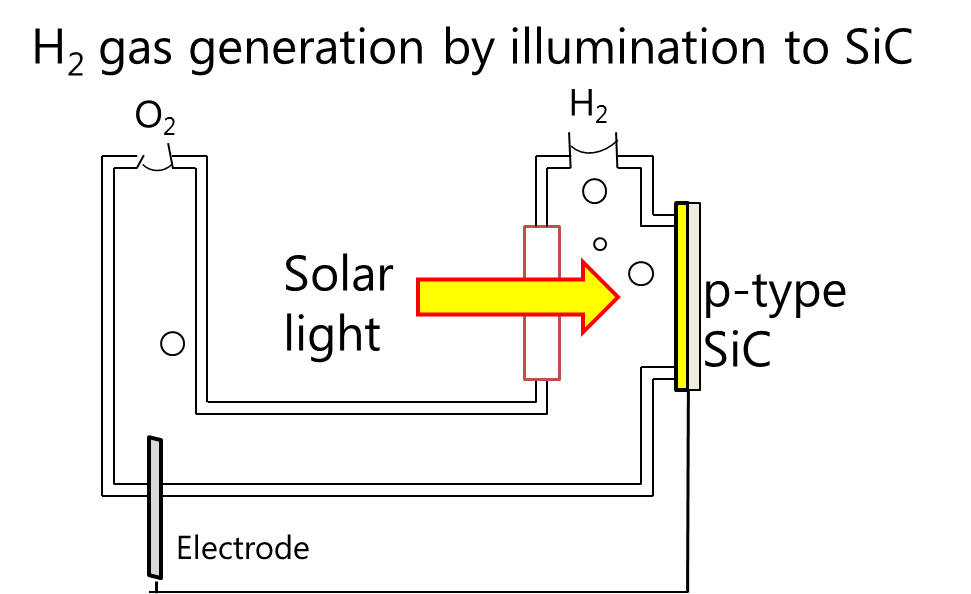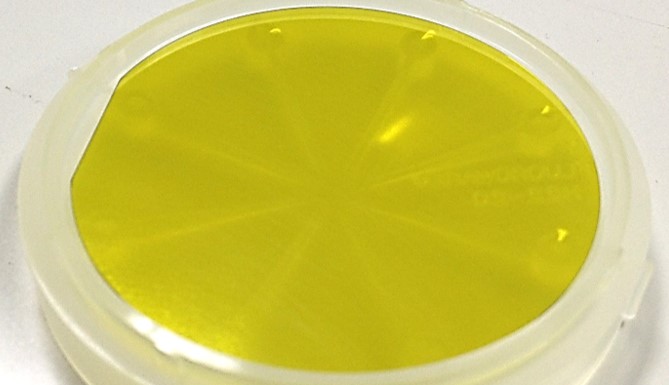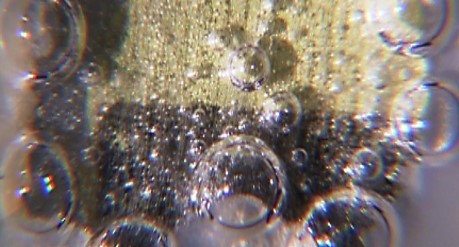
| Artificial photosynthesis is a technology for generation of chemical energy from solar energy. This technology can produce energy resources only from solar light. There are many methods for artificial photosynthesis, but most probable methods are those based on semiconductors. Solar light generates electricity in semiconductors and, by using the generated electricity, energy resource can be produced. It is similar to solar cell technologies, but the generated resources can be stored. The resource mostly discussed in researchers is hydrogen, which is produced by water splitting. |

|
|
|

|
We have shown possibility of SiC as a semiconductor material for artificial photosynthesis. This material is highly durable and efficiently generate hydrogen. The key point for artificial photosynthesis using SiC is crystal growth of a cubic structure of SiC (3C-SiC), which can absorb a significant amount of solar light. Growth of high quality 3C-SiC crystals induces high hydrogen generation capability. |
|
It absorbs blue color and then seems yellow colored. |
| We have worked on not only SiC but also other semiconductor materials for artificial photosynthesis. We are searching limiting factors for eneryg conversion efficiency. In addition, combination of several materials will increase the energy conversion efficiency, and it also makes possible to generate resources other than hydrogen. |

|
|
|
| For information, here is movies for hydrogen generation using SiC. |